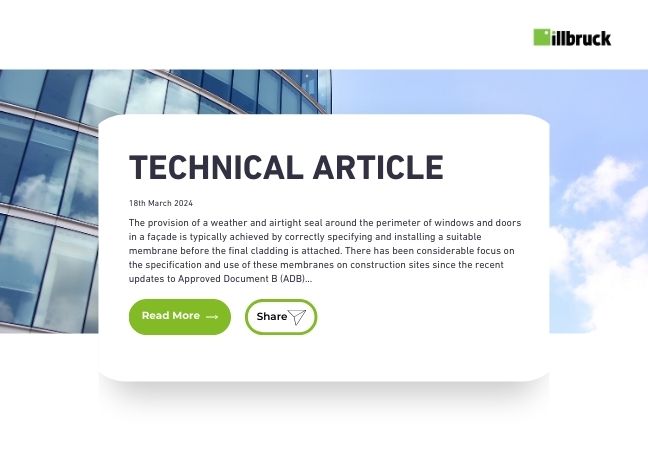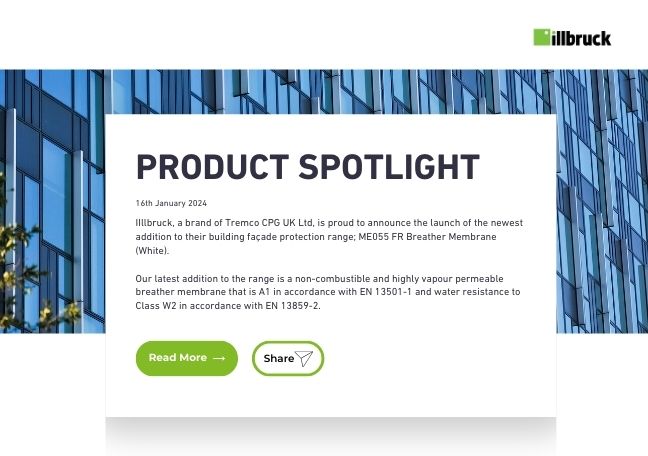Considerations for Façade Joint Design
Whilst the façade of any building is an important factor and the finishes selected should be chosen carefully, architects around the UK should also consider safety, longevity, and maintenance. Given the increase in contemporary architecture across the city skylines, now more than ever before, the façade of a building is of special interest. Faced with large dimensions, high material diversity and unconventional shapes – joint design is demanding and prone to mistakes if not an integral part of a building’s specification.
Gaining long-lasting, compliant, and flexible façade joints are critical to the success of a façade. Our technical expert, Andrew Thomson, sheds light on the four key considerations for correct façade joint design.
1. Protection against weather conditions
Environmental conditions can often have an impact on the service life and performance of a sealant. Therefore, conditions such as UV radiation or the chemical environment must be considered when choosing the correct product.
When sealing between the inside and outside of the building, the vapour permeability of the sealant must also be considered to avoid any accumulation of water within the structure of the building. As best practice, specifiers should choose a sealant with lower vapour permeability on the warm side of the wall due to the normal humidity of warm air.
2. Joining of materials
Depending on the design of your façade, it may consist of substrates made from different materials, such as glass, metal, brick, or stone (just to mention the most common). It is a requirement that these different substrates are sealed to each other and sometimes to other building protection products, such as membranes or silicone adhesives.
The sealant chosen within the specification must show sufficient adhesion to the joining materials and at the same time, must be compatible with materials to avoid discolouration, loss of adhesion or any changes of properties.
3. Joint Width
The façade joint width is calculated depending on the expansion and contraction which will vary according to the substrate type – it also considers the maximum and minimum temperature to which a façade will be exposed. Deflections caused by mechanical loadings will also determine the size of the joint required.
All sealants are classified according to the joint width subjected to the daily movements that it needs to withstand. To simplify your choice, sealants are often classified according to their movement classification by building standards.
4. Appearance
The façade often represents the face of a building. Therefore, when specifying the joint sealant, the visual appearance of the joint should be considered. Besides the colour matching of the façade and the tool ability of the sealant – specifiers should also avoid migratory staining on natural stone or streaking onto the glass.
Staining to Natural stone can spoil the appearance of a building’s façades and is often irreversible. By using a product such as FA880 Premium Natural Stone Silicone (Matt) the risk of migratory staining is eliminated due to the technical properties of the product. FA880 offers a much higher movement accommodation factor than similar sealants.
Here at illbruck, our team of experts can work closely with specifiers to ensure that joint sealants offer a great ascetical finish, as well as meet the latest cost efficiency and building regulation requirements.
illbruck joint sealants have best-in-class handling properties, as well as the reassurance of compatibility with other products from within our extensive range.
To find out more information on façade joints sealants, please visit our website or contact the team via email at hello@cpg-europe.com









